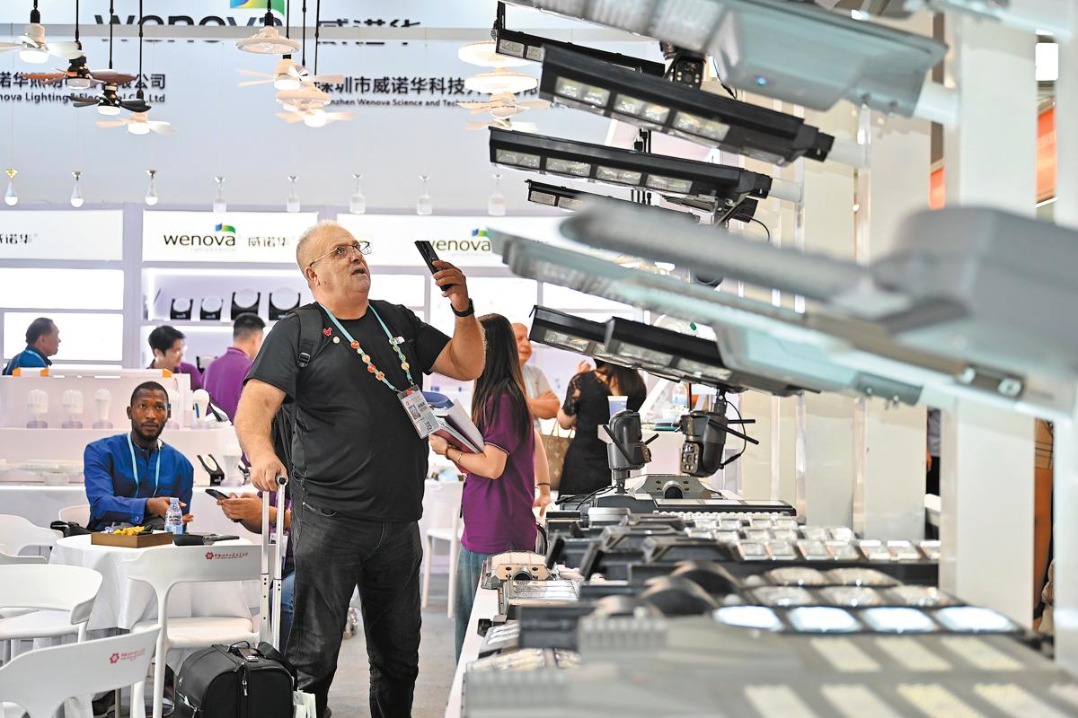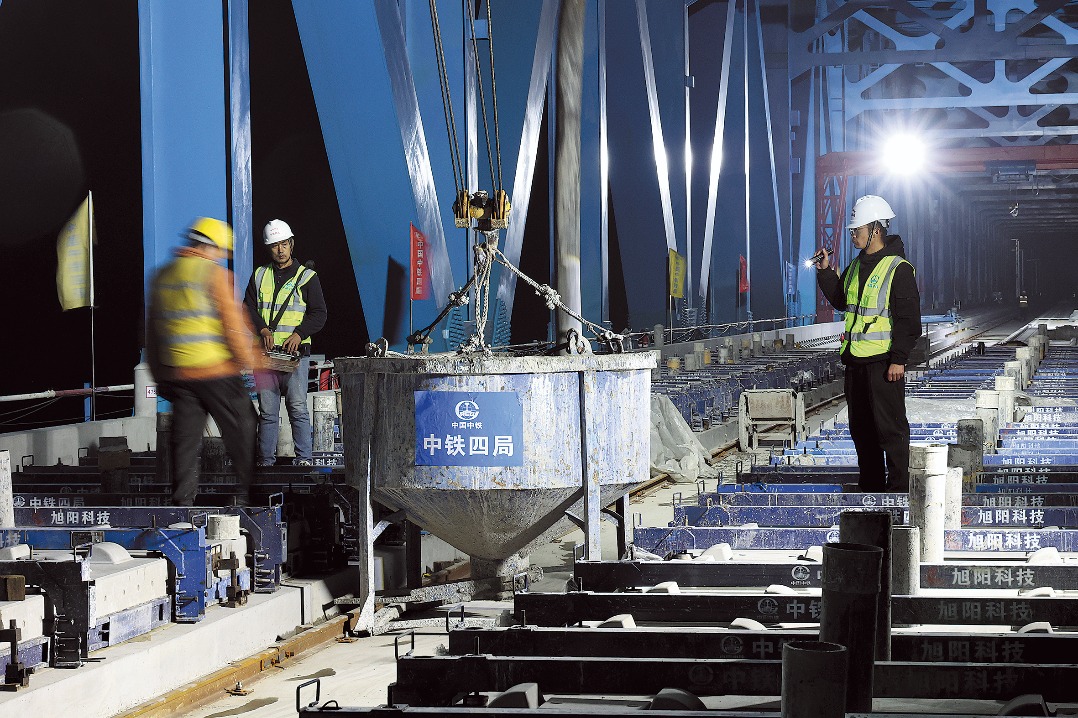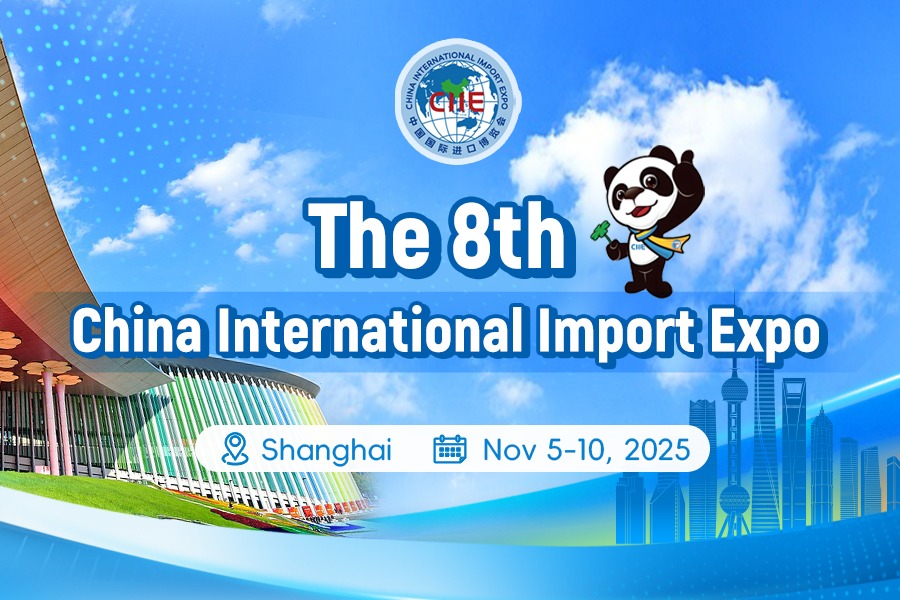NANJING COMPANY SPREADS THE WORD ON BIBLES
Millions of copies produced for export to more than 140 countries, as market offers great potential

Zhong Yuanyuan applied the final layer of glue to the spines of copies of the New American Bible before they passed quality checks and were ready for export to the United States.
The 39-year-old works for the world's largest Bible-printing facility and China's top Bible exporter in Nanjing, capital of Jiangsu province.
She is just one of more than 500 staff members employed by Nanjing Amity Printing Co, for which printing Bibles has become a specialty. It took the company 25 years to print the first 100 million and just seven years for the next 100 million.
"Since I started work here 20 years ago, I've handled Bibles produced in more than 20 languages, such as English, Portuguese, Thai, Swedish as well as the language used by the Lisu ethnic group in China," she said.
Zhong spoke while Bibles produced in different designs and languages were coming off noisy production lines. "The factory floor is like a sea of Bibles," she said.
Copies ordered worldwide are stacked neatly next to each other on the factory floor.
Qiu Zhonghui, chairman of the company, said the books will be packaged after undergoing strict quality inspections, as they are designed to accompany the purchasers for the rest of their lives.
"Compared with other publications, people still prefer to have a beautifully printed Bible in their hands, rather than reading it from a digital tablet. So Bible printing hasn't been affected by the digitalization of books, and I believe the situation won't change in the next 10 years," Qiu said.
Michael Perreau, general secretary of the United Bible Societies, said people often wish to have printed copies of the Bible after reading a digitalized version.
"In short, digitalization actually supports the distribution of the printed version of the Bible," he said.
On Nov 11, the 200 millionth Bible came off a production line at the printing factory, which in 2008 moved to a bigger site covering 85,000 square meters to cope with its expanding business overseas.
Of the Bibles printed in more than 130 languages, over 85 million have been distributed to churches in China, including copies in Braille and in 11 ethnic languages. The remainder have been exported to over 140 countries.
The company is expected to export 12.7 million Bibles this year, a rise of 6.6 percent year-on-year.
At the factory's warehouse, packaged Bibles are quickly dispatched to overseas buyers, and this demand is surging.
Ferenc Szucs, director of Patmos Records, which distributes Bibles in Hungary, was attempting to see if he could spot those heading to his country by going through the names of the recipient nations marked on the boxes.
"I am impressed with the quality of the Bibles produced in China. That's why I'm here, to place more orders," Szucs said. Two years ago, his company placed an order for 30,000 Bibles, and it plans to order another 30,000 next year. Bibles in denim covers with floral prints are particularly popular in Hungary.
Xu Yihua, a professor with the Department of International Politics at Fudan University in Shanghai and a member of the China Committee on Religion and Peace, said the country has become one of the largest Bible exporters in the world.
Some people feel that Bibles are mere commodities, but he believes the exports have built a platform for Chinese churches to better communicate and enhance understanding with their counterparts worldwide. "During the process, the world can better understand the real situations of Chinese churches," Xu said.
Qiu added, "The establishment of the company (Nanjing Amity Printing) was the result of China's opening-up and the policy of freedom of religious belief, while the increase in Bible exports has shown that China has expanded its scope for international trade."
Under the Belt and Road Initiative, the company has set up branches in Ethiopia and Kenya, in 2015 and this year respectively, to better serve the public in those countries, Qiu said.
Xu Xiaohong, chairman of the National Committee of Three-Self Patriotic Movement of Protestant Churches in China, said the healthy development of Bible printing in the country is closely linked to national progress.
"By serving followers in more than 140 countries, the company has sent a signal to the world that China seeks peaceful development and is willing to take on more international responsibilities," Xu Xiaohong said.
In 1986, the company was established through the joint efforts of the independent Chinese voluntary organization the Amity Foundation and the United Bible Societies to meet the needs of Christians in China. The first copy of the Bible in Chinese rolled off a production line a year later.
The circulation of Bibles in the country is supervised by the National Committee of Three-Self Patriotic Movement of Protestant Churches in China and the China Christian Council. From 2014 to last year, the two organizations distributed more than 18 million Bibles in China.
He Jiemiao, president of the Jiangsu Provincial Christian Council, said, "Many churches in China have set up bookstore-like facilities to distribute Bibles to improve followers' experiences."
As living standards have improved, demand has risen among Chinese Christians for better-designed Bibles, especially those with traditional Chinese characters.
In recent years, the company has produced Bibles with covers made from bamboo and has integrated elements of blue-and-white porcelain into the designs to inject Chinese culture into its work.
To cater to participants in the 2008 Beijing Olympics, the company printed 100,000 Bibles bearing the logo for the Games, Qiu said.
This year also marks the 100th anniversary of the Chinese Union Version Bible, which is the main translation used by most Chinese Christians. It is not only available in China, but also in churches worldwide where Chinese is spoken.
The translation of Bibles into Chinese can be traced to the Tang Dynasty (618-907). This work in modern-day China has been accompanied by the sinicization of the country's churches.
By the second half of the 19th century, translations of the Bible had been undertaken by missionaries in China from different nationalities, denominations and societies. Some copies were translated in classical Chinese and others in modern Chinese.
As the 19th century drew to a close, the need for a unified version became increasingly urgent for Chinese churches. It took nearly 30 years before the classical and modern Chinese versions of the Bible were published by more than 30 foreign missionaries and their Chinese assistants in 1919.
Since then, the modern version has grown to be the most popular in Chinese.
The birth of the Chinese Union Version Bible ended an era of biblical translations by foreign missionaries. The first version of the Bible translated by Chinese in their own language was published in 1922.
In 1980, the National Committee of Three-Self Patriotic Movement of Protestant Churches in China and the China Christian Council reprinted the 1919 edition of the Chinese Union Version Bible in traditional Chinese. In 1988, it was translated into simplified Chinese, with the revised version first printed at Nanjing Amity Printing Co.
Bishop Shen Bin, vice-president of the Chinese Catholic Patriotic Association and Bishops Conference of the Catholic Church in China, said the number of Bibles printed is a "barometer" for the development of Christianity, while changes in Biblical translation can also showcase the sinicization of Chinese churches.
"Chinese followers now have higher requirements for Bible translations, so there are proposals to make some adjustments, such as making the translations of certain people's names and places more accurate," Shen said.
Perreau, from the United Bibles Societies, said the Nanjing company is now the biggest supplier to the organization. More than 60 percent of the Bibles distributed by the Societies' network in over 200 countries and regions were produced by the company.
In August, the US government announced that Bibles and other religious literature would not face additional tariffs of 10 percent.
"Bible printing and exports have great potential in China, which will be more open in the future," Perreau said. "Even the trade war between the country and the US has not affected such exports."
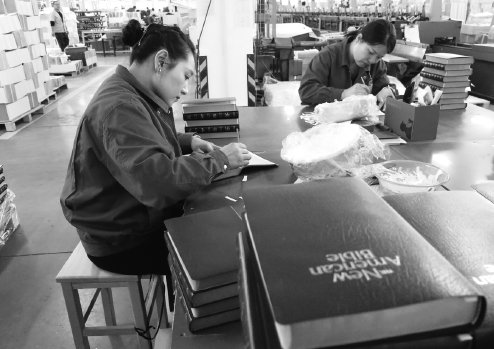
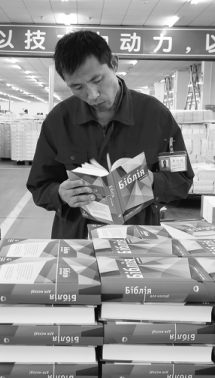

Today's Top News
- New plan to boost inclusive green growth
- Philosophy has resonance across globe
- Nexperia's China unit pledges stable chip supply despite Dutch headwinds
- HK urged to advance nation's strength, self-reliance
- Li stresses importance of Sino-Russian ties
- Defense pact between Manila and Ottawa potential catalyst for regional instability: China Daily editorial





















